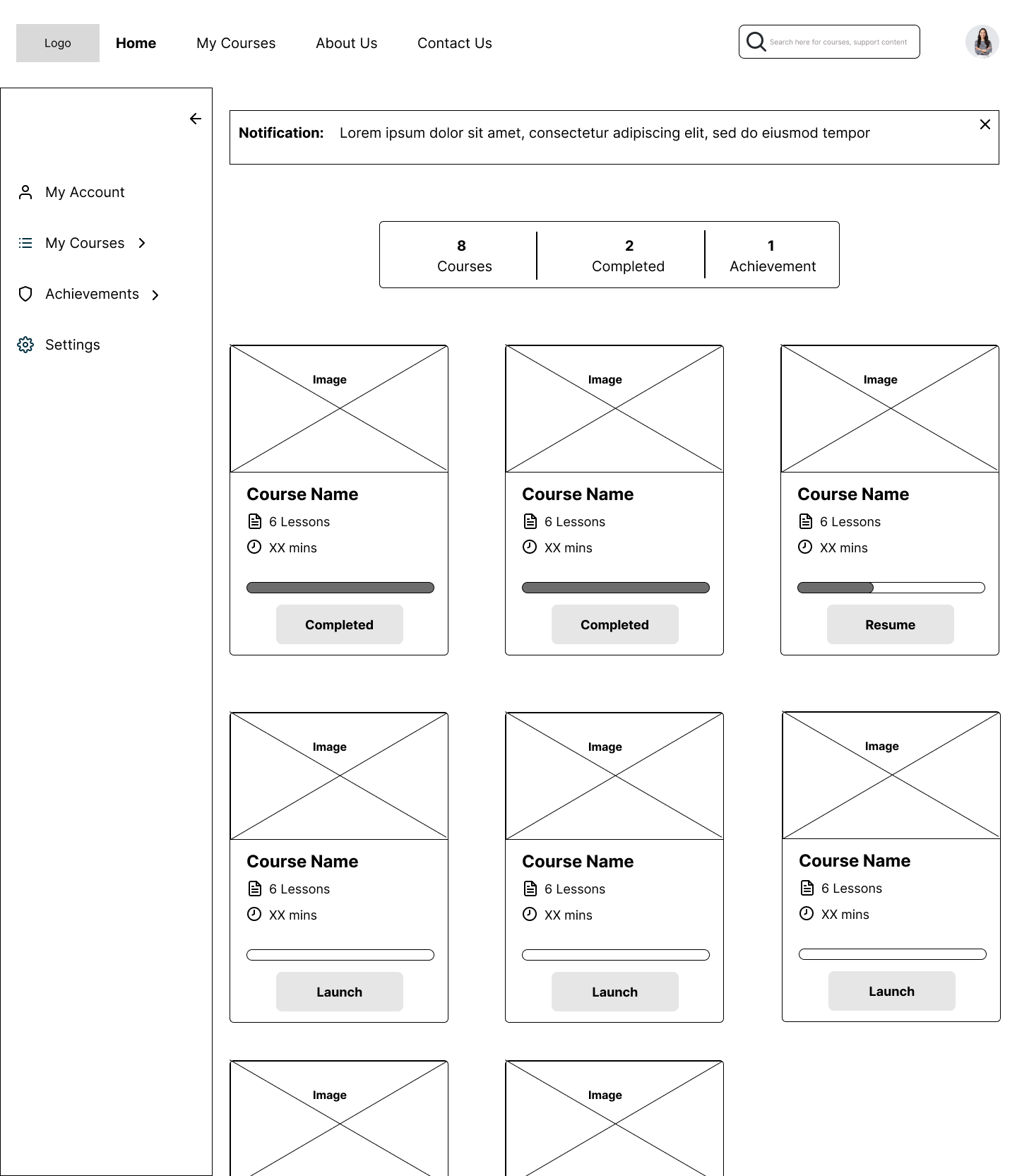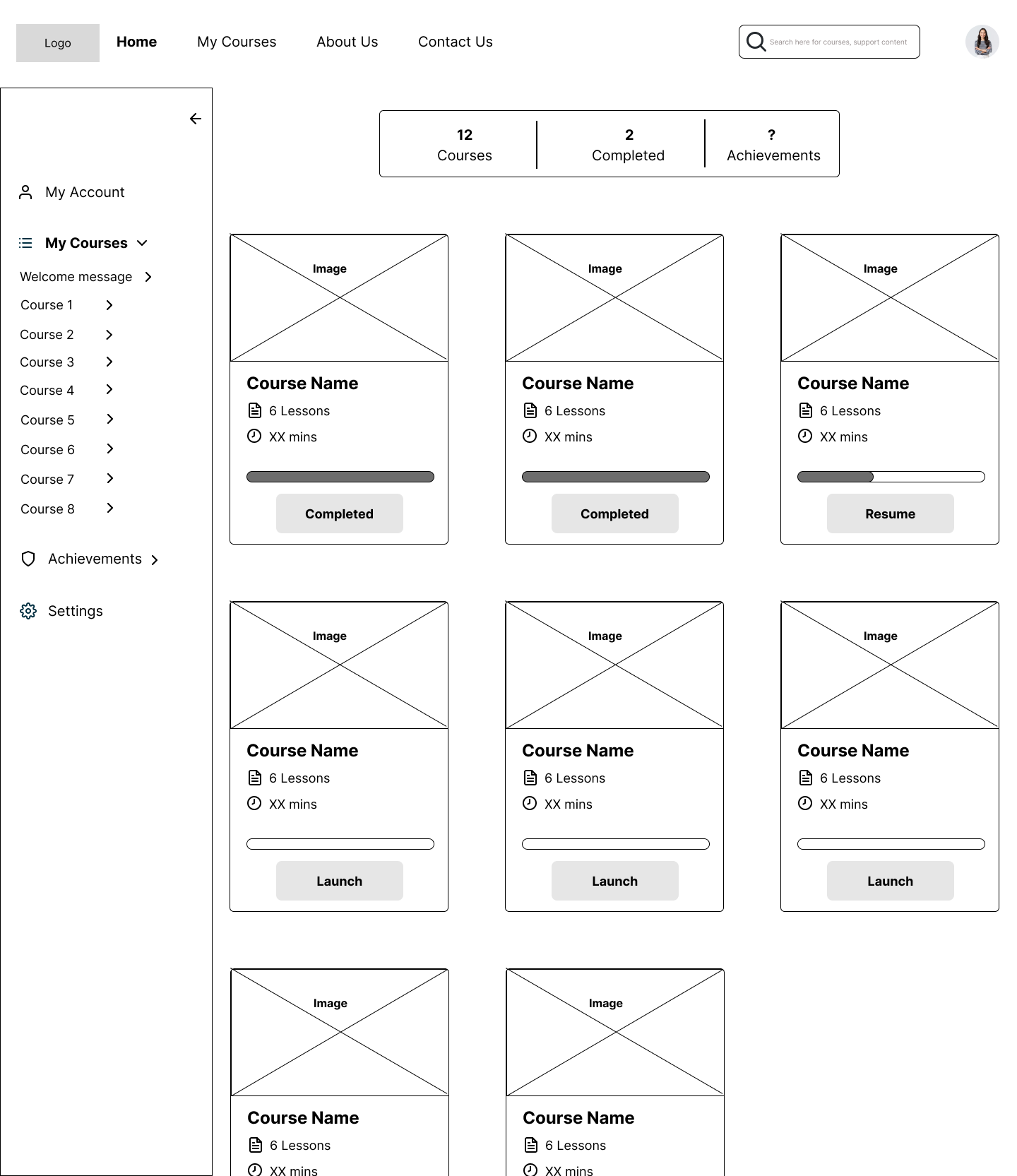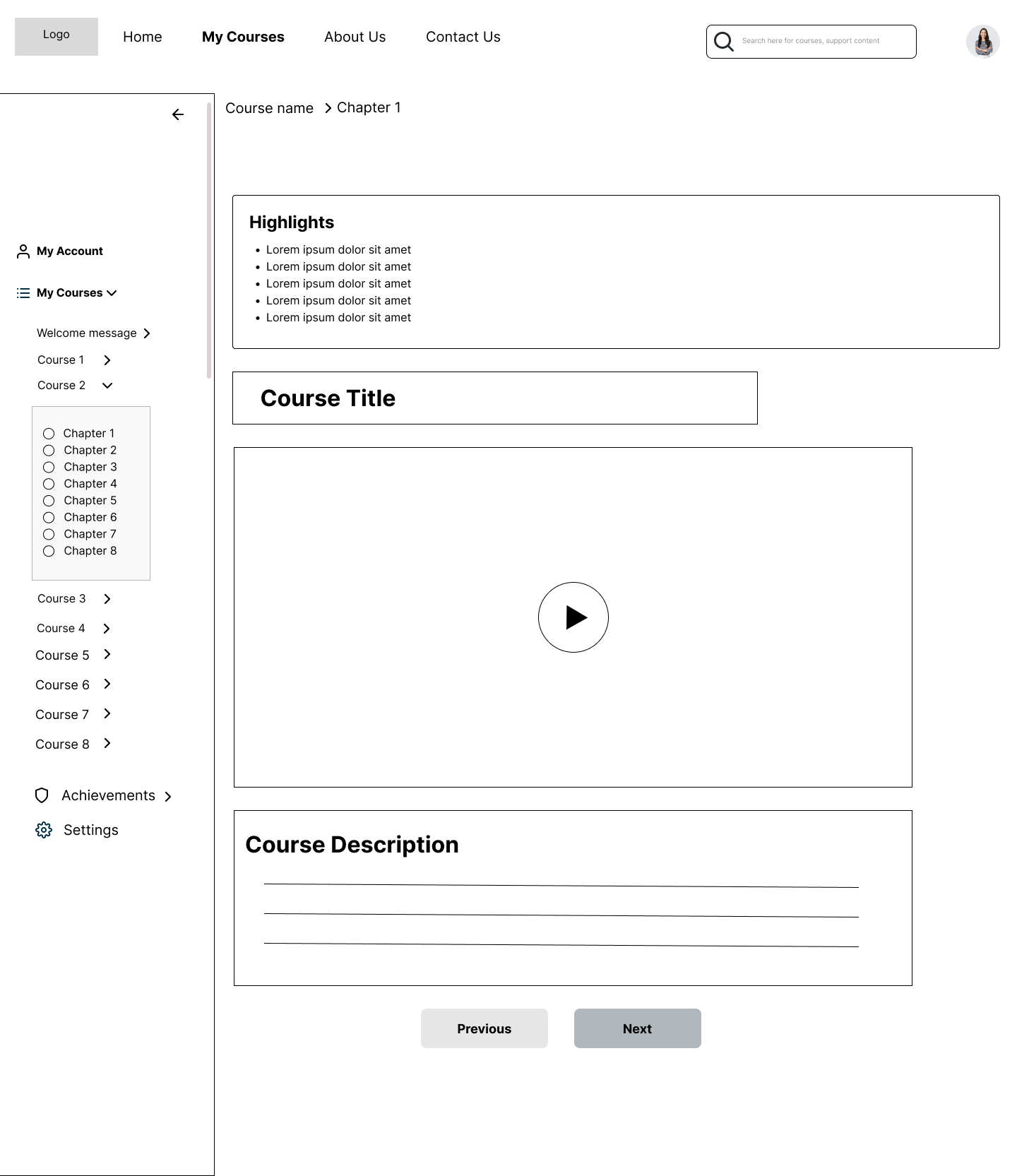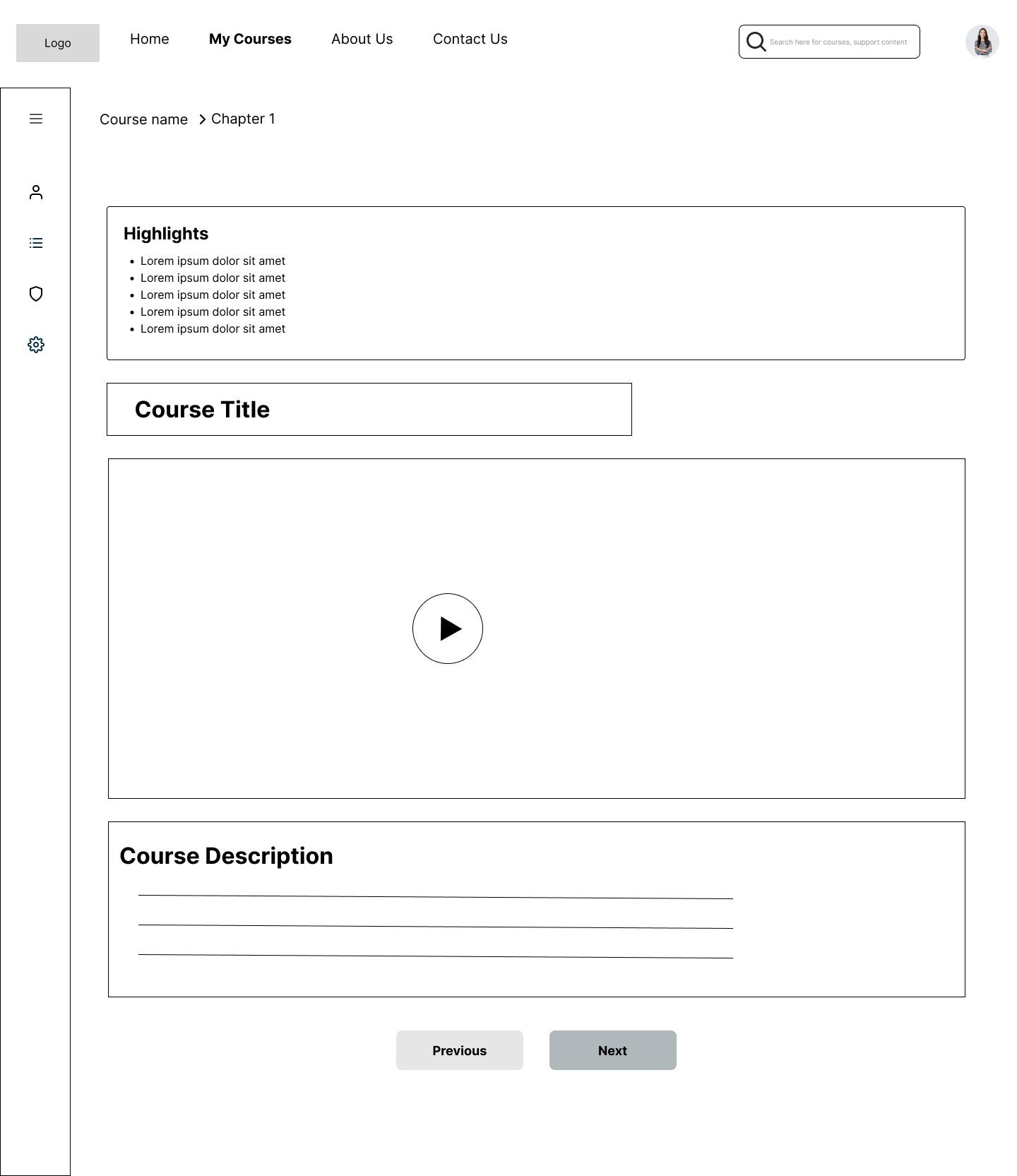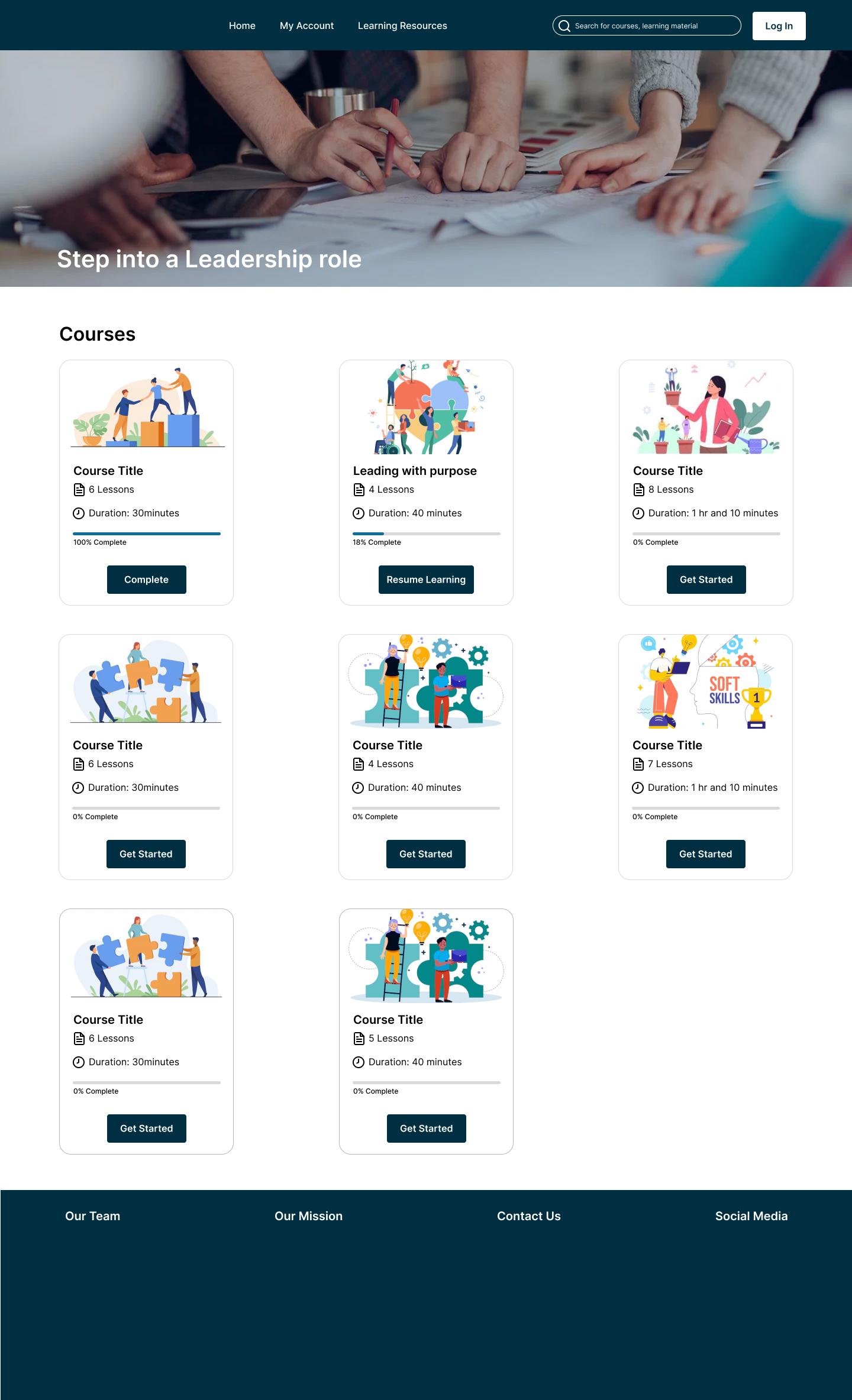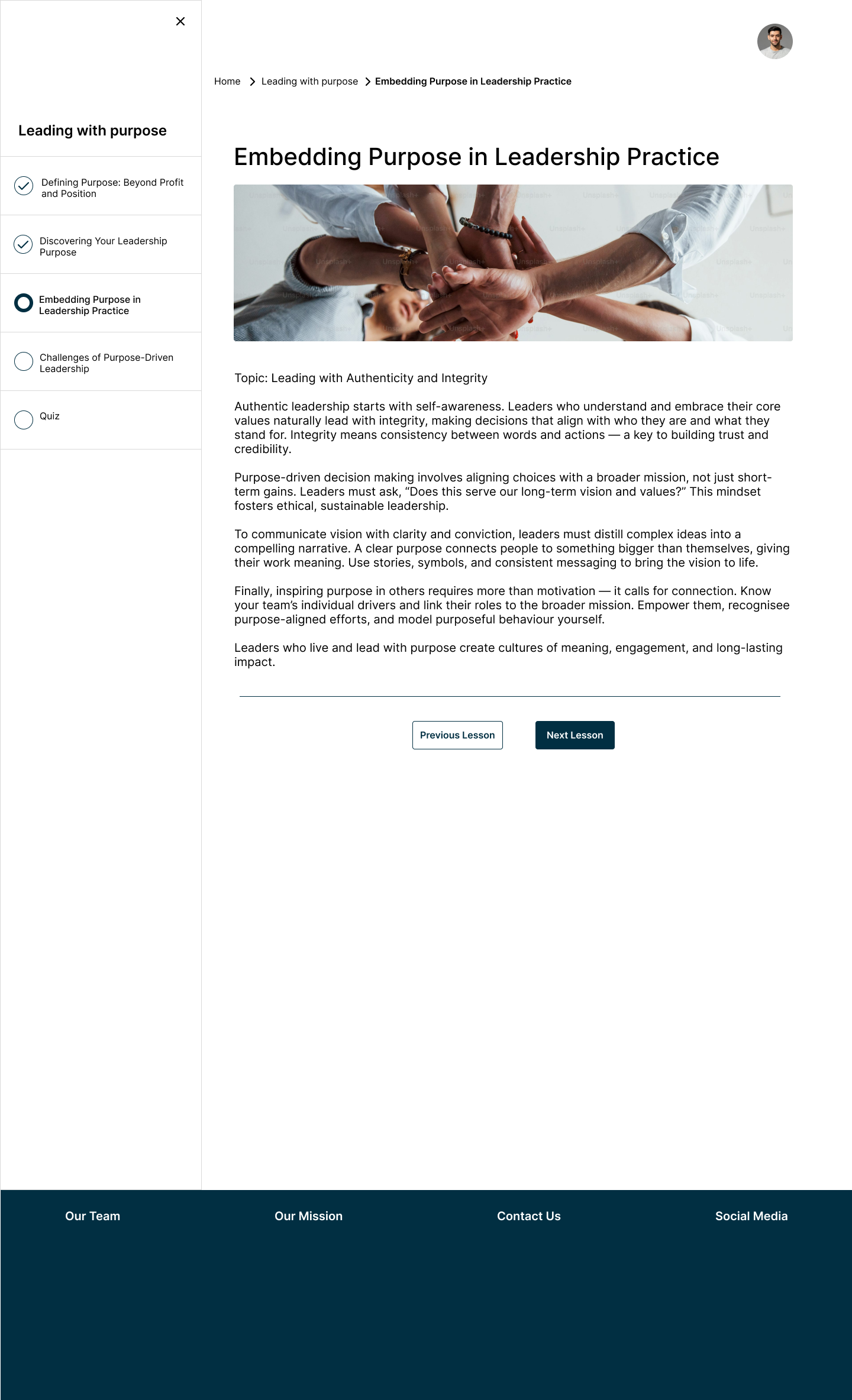We started with a competitive analysis of existing digital tools, focusing on usability, core features, pricing, support requirements, and adaptability. Our goal was to identify a platform that was intuitive, easy to manage without extensive technical support, and cost-effective. We shortlisted and presented four suitable options to the client for final selection.
Following the tool selection, we performed a UX audit on their existing digital tool to identify usability issues and user pain points. We also conducted user interviews to better understand their needs, behaviors, goals, and frustrations. These insights helped us prioritize features and solutions more effectively.
We identified few key issues:
Navigation: Redundant buttons and non-functional progress indicators impaired usability.
Lack of Customization: The existing platform did not support any level of customization.
Progress Tracking: Users and stakeholders required better mechanisms to track course completion.
Content Format: Long, static content without interactivity reduced engagement. The client requested varied content formats, including quizzes and post-course recognition.
We established the following five goals:
Deliver a modern, intuitive digital platform
Enable non-technical staff to update content independently
Enhance usability for volunteers across all experience levels
Incorporate gamification features to boost engagement
Implement a course completion tracking system
To achieve these goals, we began with information architecture and user flow design to ensure logical grouping and seamless navigation. Our approach emphasized customization of the selected platform to offer a more intuitive user experience.
We created low-fidelity wireframes featuring a redesigned homepage that included:
All available courses displayed prominently
A side navigation menu for easy access to course modules
A top navigation bar for primary functions
In the previous platform, the navigation was cluttered, and moving through courses was frustrating for users. To solve this, we introduced a dedicated side navigation menu focused solely on courses and chapters. This allowed users to concentrate on the learning content and move through it more smoothly, without distraction.
Previously, the platform had too many scattered sections, some of which lacked clear purpose or valuable information. It felt overwhelming and ineffective. Through our research, we identified which features were truly important to both the client and the users. Based on those insights, we simplified the layout by adding a top navigation bar with only the most useful functionalities, making it easier to access key tools without clutter.
Users on the older platform struggled with a lack of clarity around their learning progress and time commitment. To address this, we displayed all courses in a card format on the homepage. Each card included a course title, image, estimated duration, and a progress indicator. This helped users quickly scan available courses, understand their status, and better plan their learning.
The earlier platform had no way for the organization to communicate directly with users. To improve this, we added notification. This allowed the client to share important updates or messages, improving communication and keeping users informed.
To make the learning experience more engaging, we added a variety of quizzes—multiple choice, image-based, and video-based. These interactive elements helped break up long-form content and added a sense of fun and accomplishment to the learning journey.
We ensured that the search function worked well for locating courses, quizzes, and extra supporting content. This made it easier for users to quickly find what they needed, making the search bar a reliable go-to feature across the platform.
Although the team delivered a working website, my contributions as a UX designer were limited to low-fidelity wireframes and mock-up images. These served as the foundation for visual direction and user flow, in alignment with project scope and team roles.
During development, we encountered limitations in the platform's customization capabilities and due to budget constraint we have not been able to move to another platform. As a result:
We restricted access to one course at a time, rather than allowing users to switch between courses freely.
Although we initially planned a progress summary at the top of the Homepage, this feature was not implemented due to technical challenges. Instead, progress is indicated through individual course button text.
Despite these challenges, the development team successfully delivered a web app version of the platform. This made the training more accessible, increasing the likelihood that users would complete their courses more efficiently.
The redesigned platform received positive feedback from both the client and the users. They liked the improved navigation, new clean design, spacing, visual consistency, and streamlined layout.
One of the most valuable results was that the non-profit team can now update and manage content independently, without needing constant technical support. This was our key goal, and meeting it saved time and budget for the organisation.
These are Mid Fidelity screens; These are not actual UI of the application, but representative.
The redesigned tool received positive feedback from both users and the client. Key results included:
A cleaner, more intuitive navigation system
Improved user understanding of flow and task progress
Volunteers found the new interface easier and more enjoyable to use
The internal team can now update content independently — reducing reliance on developers and saving resources
Our design empowered the non-profit team to maintain their platform more efficiently and laid a strong foundation for future iterations
This project challenged me to design within limitations—technical, financial, and time-related. It pushed me to be scrappy and creative. I learned a lot about the chosen platform, even building components myself when needed.
More importantly, I learned the value of collaboration, adaptability, and deep listening—key to creating something meaningful even under constraints.

